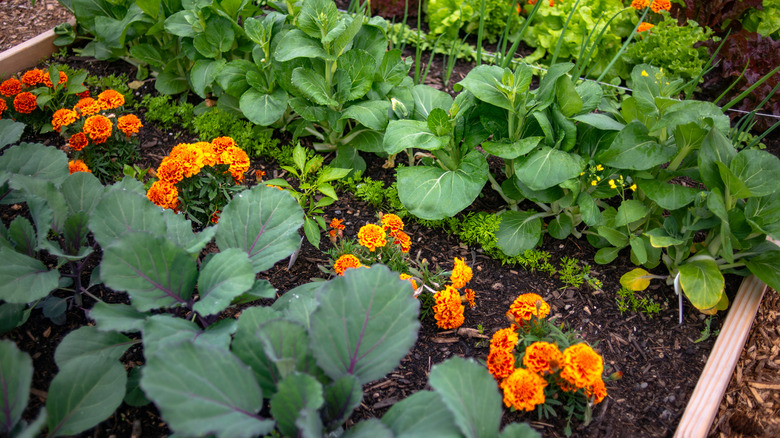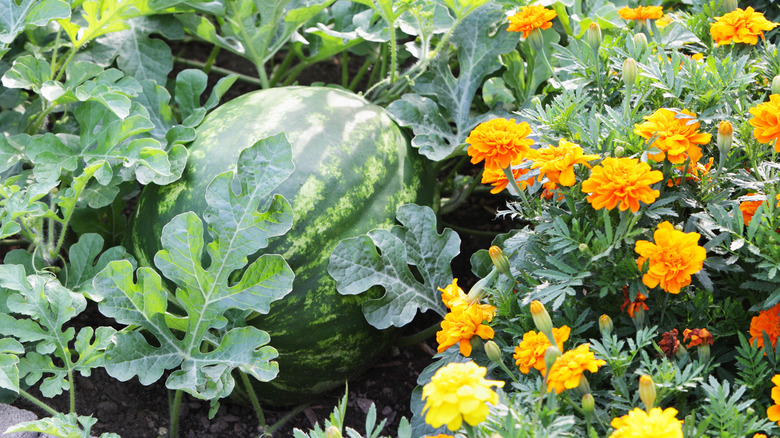There’s something sweet and inspiring about seeing marigolds growing in pots or flowerbeds around the home. They are beautiful flowers, and that pop of yellow or orange in your garden can help to create a welcoming, brightly colored space, making it all the more enjoyable to sit in your yard. But they aren’t just great for aesthetics — they also have a ton of benefits. Not only are they edible, but they also bring in bees and other pollinators, helping to encourage other plants to grow and flourish. They can also work to defend against insects that will most likely chomp away at your vegetable plants and eat through your lettuce leaves.
If you’re looking for a reliable flowering plant to fill the extra space in and around your garden or have a few empty flower pots you can place nearby, head to your local garden store, pick up a flat of these plants, and get them in the ground. Not only will this take just minutes since they also happen to be very easy to care for, but they require very little overall attention throughout the season. Not convinced? Here are the many reasons to include them in your yard.
Marigolds can help support your garden’s growth and health

One of the best benefits of planting marigolds in a garden is that they are working plants. That is, they can help to protect and support the growth of just about every vegetable (and even the fruit on nearby trees). Marigold roots release a chemical into the ground that helps to repel pests, especially if you’re using a version such as French marigolds. It’s a natural repellent to insects that are typically problematic to gardens, like cabbage worms and even mosquitos. For example, planting them near tomatoes can help keep pesky whiteflies at bay, which are known to damage tomato plants.
While the sweet, sometimes strong scent of a marigold may be appealing to you, just having these plants blooming in the garden will deter bigger pests as well. For example, the smell may discourage some bigger critters from stealing your hard work, like deer and squirrels. When grown as a companion plant to lettuce and cabbage, they can also help reduce the risk of rabbits snacking on these goodies. Choose the strongest-smelling marigolds at the garden center to get the best results in this way. They aren’t foolproof, and you’ll need to take other measures to control pests in your garden, but they are a natural and beautiful supportive option.
Marigolds draw in the insects you want in your garden

Placing marigolds in your garden will also encourage pollinators to visit. Since these flowers bloom for weeks at a time right at the start of spring, they are an excellent way to attract pollinating bees. They will continue to visit, too, week after week, keeping your vegetables growing, making this a great pollinator plant. One of the reasons why bees and other pollinators are attracted to marigolds is because they are a single-bloom type of plant. This makes them easier to access the interior heart of the flower where the nectar they are seeking is. On flowering plants with multiple flowers, it’s not always as easily accessible. It’s not just bees either, but also butterflies.
There’s also evidence that color matters when attracting insects like bees to your garden. Marigolds’ bright yellow, orange, and sometimes red coloring is a bright beacon to them. Their golden color makes them super easy to find and offers a bit of protection to the bee, which blends in easily with it. Planting them near your growing tomatoes or squash will help ensure the bees stop by for a visit.



